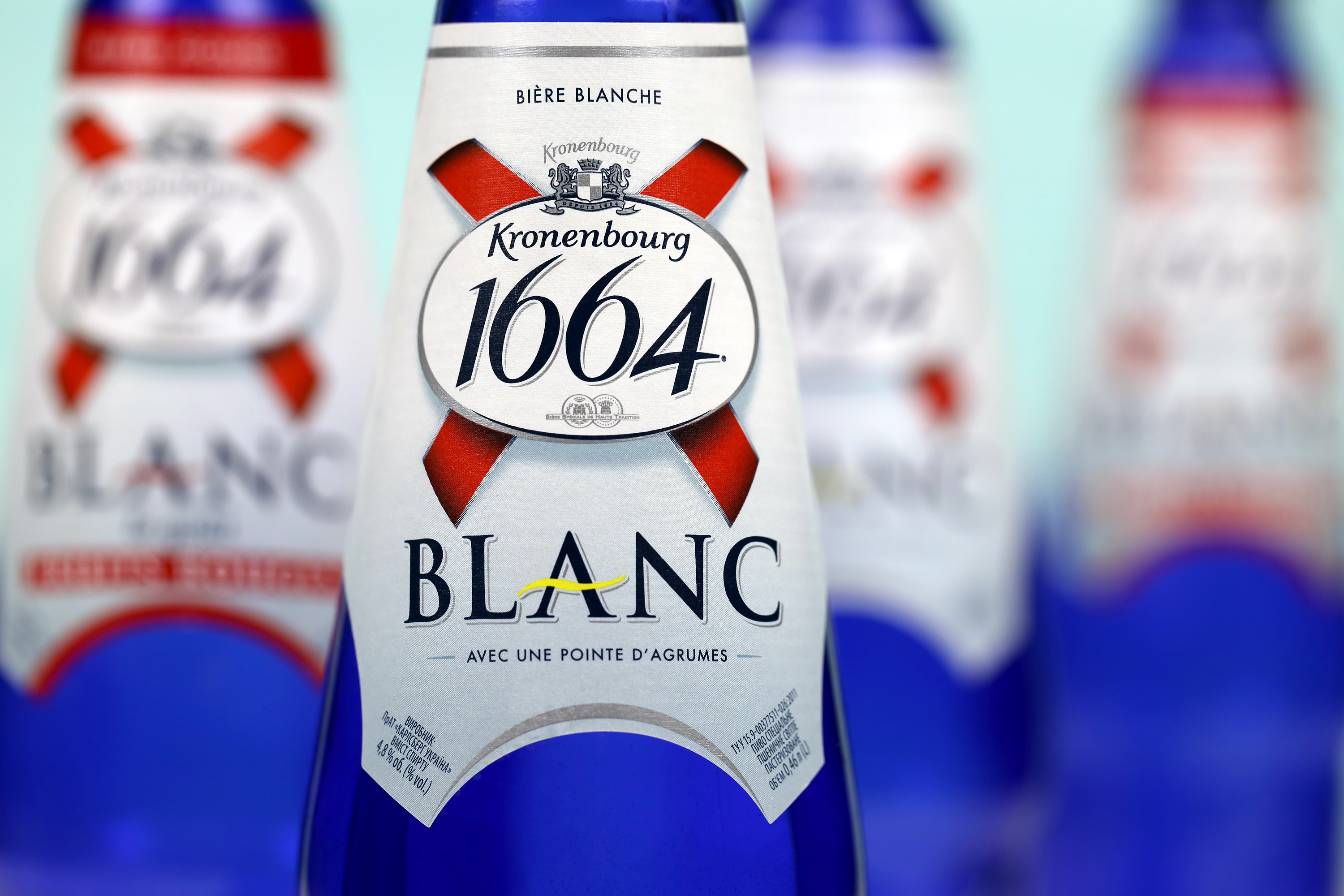Three hours and 23 minutes late on an ICE Sprinter route, for which Deutsche Bahn, or DB for short, needs four hours and 18 minutes as planned. This is how my experiment begins; and it could have ended like this again. Because I plan to travel from Berlin to Cologne. And from there within the next three days with seven other high-speed trains in different comfort classes through six European countries.
To try it out for yourself: How do super express trains work in other countries? What do you do differently abroad, maybe better? Are there things that the railways could copy, especially for their ICE trains?
To do this, I have to arrive in Cologne by the evening, if necessary at night. The next morning I want to board the Thalys super express train to Brussels at the main train station. If that doesn't work, the first stage of my tour, which I put together on various booking portals on the Internet, threatens to be the last. In view of the ticket and hotel costs of around 1200 euros, the 50 percent ticket price compensation that DB pays for delays of 120 minutes or more - in my case 27.70 euros - would not help me much.
At Berlin Central Station and in the hours that followed, what the Germans have been experiencing with Deutsche Bahn for months takes place in an absurd concentration. My train is scheduled to depart at 5:23 p.m. However, there is no ICE at 5:23 p.m. On the displays at the station: no information. Announcements: none. The digital wagon position display on the track: does not work.
At 5.40 p.m. the announcement is made that there will be a platform change. The passengers sprint in hundreds with suitcases, children and skittles upstairs and downstairs from platform eight to platform four. There is no ICE 1154 arriving there either, but a delayed ICE from Bonn, which is being converted into a replacement train. However, this is only experienced by those passengers who have the DB app on their cell phone.
I find an empty compartment before the app tells me that this train is also cancelled. The train driver announces that there are no more trains between Berlin and Hanover today. "The brave can try to go to Hamburg and try to get to Cologne from there."
I'm brave, as are a few dozen fellow travelers. We rush up one flight of stairs and down another to platform eight, because that's where the next ICE train to Hamburg is supposed to leave at 6:05 p.m. The next drama: Delay, overcrowded train, even in first class people are sitting on the ground.
After all, the train arrives in Hamburg, at the main station I catch a half-full ICE towards Cologne. The toilet in my carriage is locked, seat service is not available in first class. I treat myself to a passable Pinot Blanc in the on-board bistro. I arrive in Cologne at 1.04 am.
The punctuality rate of Deutsche Bahn in long-distance traffic was an embarrassing 56.8 percent in August 2022 and was thus below 60 percent for the third month in a row. It's the worst reading in a decade. And the truth is that Deutsche Bahn doesn't even count failed connections.
One of the reasons is the ailing railway network. The federal government wants to spend a lot of money renovating it by 2030, and Deutsche Bahn announced a massive renovation program this week. It wants to invest more than 19 billion euros in new trains by 2030. The route conversion will result in further diversions and delays.
And compared to many neighboring countries, DB has so far invested significantly less per inhabitant: according to the transport alliance Allianz per Schiene, it was 124 euros per capita in 2021, while Austria spent 271 euros, Switzerland 413 and Luxembourg 607 euros per inhabitant on rail infrastructure. In the years before that, Germany was even less active.
The next morning we start 24 minutes late. The Thalys (which connects Cologne, Düsseldorf and Amsterdam with Brussels and Paris, among others) was held up in Dortmund because of an "operational incident". So in the area of responsibility of the DB. He doesn't make up a minute of the delay on the way.
The sleek train is burgundy on the outside, and the same on the inside – with the velvet armchairs in the premium class, the red carpet, the toilet with the photo wallpaper and the red lamps, it almost looks a little puffy. You sit more comfortably than in the first class of the ICE, the seat cushions are 64 centimeters wider than in the DB, they also offer more seat spacing. At 89 euros, the ticket costs are below the ICE price level for a comparably long route.
And can the DB learn something from the Thalys in addition to the seating comfort? some! The WiFi works better than in the ICE. The employees in my car are all friendly and all speak German, French, Dutch and English. Unlike Deutsche Bahn, the premium price of the Thalys includes a sumptuous breakfast (today with salmon and fresh cherries), which is served at your seat.
Unfortunately, my seat does not recline, but the train manager solves the problem immediately: He checks his on-board computer to see which seat is not reserved. In contrast to the ICE, reservations are compulsory in the Thalys. Then the manager thanks him for pointing out the damage and says that the defective seat should be repaired by the evening. Difficult to imagine at DB.
In general: the reservation obligation. Deutsche Bahn does not do this in order to give customers the greatest possible flexibility. So you can board a fully booked ICE with a ticket and you may have to stand up or crouch on the ground.
On the other hand, only those who have a ticket and a reservation are allowed to board the Thalys and the TGV in France, the Eurostar to and from London and the Italian high-speed trains. If a train is full, it is full, there are no overbookings. So there are no passengers standing either.
A problem with the reservation requirement arises when a train is cancelled. Since it is difficult to accommodate hundreds of passengers in subsequent trains. But you can deal with it, as a look at Japan shows.
Firstly, there is always a contingent of spare Shinkansen (as the Japanese high-speed trains are called) available there for emergencies. Secondly, the obligation to reserve applies to most wagons, but not to all: wagons without compulsory reservation also roll on the Shinkansen – and the fundamental question has already been solved pragmatically and in the interests of the customers.
The Eurostar connects the Netherlands, Belgium, France and Great Britain with each other - at speeds of up to 300 kilometers per hour: from Amsterdam via Brussels and Lille through the Channel Tunnel to London and from there on a second route via the tunnel and Lille to Paris.
The Brussels-Lille route would have been enough for me to try it out, but due to Brexit and the tightened entry controls, you cannot book this passage. Only passengers who travel to London and who have completed the exit procedure from the Schengen area are allowed to travel.
So I first have to drive from Brussels to London and from there again through the world's longest underwater tunnel at 50.4 kilometers to Paris. That means a big detour, more ticket costs and twice the view of concrete walls. Because the Eurostar takes 21 minutes in the tunnel each way.
Each passenger must check in at a separate Eurostar terminal, like at the airport. In Brussels, this is done with double passport controls by Belgians and British. In London with double passport control by the British and French plus a full baggage inspection each.
The advantage is that after arrival you can leave the train station without further checks. Disadvantage: You should be at the check-in two hours before the train departure. Don't miss out, the counters close 45 minutes before departure. Anyone who misses this time limit will no longer be allowed onto the platform.
On the way it starts on time, to the minute, in London the train arrives three minutes before the scheduled time. On this route I booked the standard class. The seats are comparable to second class on the ICE, but each seat has footrests and a power socket. As in the ICE, the WLAN reception is shaky. At 144 euros, the ticket price is significantly higher than that of the ICE.
The Eurostar is fully booked, but there is no one in the aisles because of the reservation requirement. Unfortunately, I'm wedged in by a group of six Flemish gentlemen who down gallons of beer on the two-hour drive. There is no conductor to be seen who could stop the drunkenness.
For the way back I booked Standard Premier, the middle class in the Eurostar. It costs around 20 percent more than the standard ticket, but also offers much more. The Premier seats are significantly more comfortable, 74 centimeters wide seat cushion, and have more space.
The price includes a cold menu: curried chicken or feta and spinach tart plus wine, served at your seat. Anyone who books the Business Premier, which is twice as expensive, sits on the same armchairs, but has more flexible tickets, can go to a separate lounge in the station and gets hot food, better wines and champagne on board.
What can DB learn from the Eurostar? In addition to the on-board service, above all punctuality. My train is five minutes late when it arrives in Paris. But according to Deutsche Bahn standards – a delay is only considered to be a delay if it is more than six minutes – it is still considered punctual.
The Eurostar and other competitors of the ICE have the advantage that they operate on their own high-speed routes. So you don't have to share the rails with slow freight trains and regional trains. In Germany there are only a few pure ICE new routes, for example between Frankfurt am Main and Cologne or Erfurt and Nuremberg.
France's state railway SNCF had its first TGV super express trains on the rails ten years before the DB, namely from 1981. It also introduced a second, cheap TGV brand in 2013: Ouigo. The concept is based on low-cost airlines such as Ryanair or Easyjet. There is only one class and cheap tariffs, but little service. Luggage over a certain size is considered an extra service, as is a socket at the seat – and it costs money.
Ouigo was a success right from the start, after just two years the company was making a profit and new routes were being added all the time. The share of TGV traffic is now 25 percent. And the brand is opening up new customers: According to SNCF, 40 percent of passengers would not have traveled if Ouigo did not exist.
Tickets are only sold online or via an app. I pay 49 euros for my almost two-hour drive, which begins after a hotel night in Paris, plus four euros for a suitcase plus three euros for a seat of my choice. I could exchange the ticket for ten euros up to 1.5 hours before departure.
For comparison: a cancellable second-class ICE flex price ticket for the slightly shorter route from Frankfurt am Main to Munich costs 101.30 euros, but with luck you can get savings price tariffs that are half as expensive. However, the ICE is almost twice as long on the road.
With the preferred seat option, I secure a window seat on the upper deck and have a clear view of the French hilly landscape, which sometimes passes me at 320 km/h. All Ouigo trains are double-deckers (you can walk through the top and bottom); If I were sitting downstairs, I would often only see noise barriers outside.
Ouigo consistently drives with non-adjustable, relatively narrow seats. 20 percent more passengers fit into the low-cost TGV than into a classic TGV. But you don't sit any tighter than with Ryanair. There are no footrests, no on-board bistro, no vending machines. The internet reception on board is similar to that on the ICE, i.e. poor. Baggage accommodation is better regulated. Larger shelves are provided at both ends of each wagon level.
Access to the platform is only 40 minutes before departure. The ticket is checked at electronic barriers, so it no longer has to be shown on the train. Two minutes before departure, no one is allowed onto the platform. And indeed, the fully occupied low-cost TGV leaves the Paris train station exactly to the minute. There is a two-minute stop on the outskirts of the city, a few seconds later a train attendant reports and promises that we will still arrive in Lyon on time. That's how it happens.
The Ouigo concept with double-decker carriages, cheap online tickets and limited platform access is groundbreaking. One wonders why the DB hasn't imitated it long ago. Especially since it is also climate-friendly, because it apparently replaces en masse domestic flights. A look at the TGV route from Paris to Lyon shows: 26 pairs of trains travel there in both directions every day, transporting more than 50 million passengers a year; compared to just 715,000 passengers in the pre-corona year 2019.
After the positive experiences beyond the German borders, I have now regained confidence in traveling by train. There are timetables you can rely on! You will catch the connecting train and not be stranded anywhere! A good feeling that has long been lost in Germany.
In order to continue to Italy with the classic TGV, which has been marketed in France under the name Inoui since 2017, I have to cover a short distance from Lyon by regional train (which again is punctual). In Chambéry Challes-les-Eaux with its ultra-modern train station, the TGV pulls up to the platform exactly to the minute.
The electronic display board is multicolored, clear, above all it shows exactly where you are and where on the platform which wagon will stop. In fact, the cars come to a stop exactly as advertised. No "reverse train", no sprint to the end of the platform. Should the DB board read along: The French display technology is significantly better than the German one, you could simply buy it from the SNCF.
The TGV 9249 is an older model but in good condition. The seats in first class are softer and wider than in the ICE, they can be tilted back so far that you almost have the feeling of lying down. Socket, footrest and WiFi are also available.
The ticket price of 92 euros is comparable to the ICE flex price for a similarly long route. However, as the TGV is more comfortable to sit in and arrives more punctually, it offers better value for money. Other details that are missing in the ICE can be found in the TGV toilet: there is a foot button for flushing, and there is a handle on the toilet seat that can be folded up and down. So nobody needs to touch contaminated pushbuttons or spattered toilet lids.
The on-board bistro "Caffè Centrale" only has standing room at bistro tables, it sells Italian and French snacks, wines and champagne. No sooner has the TGV crossed the Italian border than a train attendant rolls past with a serving trolley and smiles and treats each passenger to a freshly brewed espresso.
The people sitting next to me, a retired English couple who only travel from London to Florence by high-speed train, are delighted: "Much more relaxed than flying," she says. "And much more punctual," he says. "It's a good thing you don't take the ICE," I think. Needless to say, the TGV arrives in Turin on time, where I am staying.
After the good experience in France, I'm curious to see how Italy will fare. There are two super express trains there: the Frecciarossa (Red Arrow) of the state railway Trenitalia and the Italo, whose Ferrari-red exterior is no coincidence. The then Ferrari President Luca di Montezemolo was one of the founders of the private super express train in 2012, which travels on the same routes as the state competition.
First I test the rail Ferrari, which can reach speeds of up to 300 kilometers per hour. The departure: exactly according to the timetable and exactly where the monitors show it for each car. The train: Italian elegance inside and out.
There are three classes. Even the simplest (Smart) is equipped with leather seats, which are more comfortable than the second class on the ICE. Unlike the DB, each seat has its own socket. The other two classes, Prima and Club Executive, offer wider seats and more seat spacing, they are more comfortable than the first class in the ICE, whereby in the Club class there are private four-seater compartments in addition to single and two-seater seats.
In Prima and Club snacks and drinks are included and served at the seat. Part of the fleet even has lounge chairs with a screen like on an airplane, on which you can watch the in-flight program (25 films, music channels, games, digital newspapers). This lavish range of entertainment is available free of charge in all classes. If you don't have a screen seat, you can access it at any time via smartphone - and it works. The WiFi is of top quality.
My smart ticket, which can be canceled up to three minutes before departure, costs 57 euros for the two-hour journey, around 20 euros less than a flexible price ticket for the ICE on a similarly long route. Conveniently, shortly before the train departs, Italo offers an upgrade to the top class for 19 euros. I can't resist and enjoy a luxury train ride at a price that would normally have been enough for second class in Germany.
The red leather Club Executive chairs are as sleek as sports car seats, the friendly stewards speak good English and serve an apricot croissant with freshly brewed espresso ten minutes after departure, which the Prima doesn't have. Even when the train behind Milan fills up, the staff seems relaxed. My train attendant regrets that I'm not on board to the final station in Bari, then he would have served me lunch and a sandwich and a drink of your choice in the evening, he says with a smile.
Another plus that no other super express train offers apart from the Italo: All cars are equipped with Hepa filters, which, like in an airplane, exchange the air every three minutes and also suck out corona viruses. We reach the destination station with a minimal delay of two minutes.
Can the state railway's super express train keep up with the Italo competition? Not when it comes to punctuality: During my test drive, it starts five minutes late and arrives 20 minutes late. In terms of equipment, on the other hand, the Frecciarossa with its four classes sets standards, at least in the two top classes.
The standard class, like premium, offers two two-seater seats per row, which are similarly narrow as in the second-class ICE. The standard seats are upholstered in fabric and are only adjustable in part of the fleet.
The premium class, which I booked for 41 euros (about double the price of standard), offers the same seat pitch but leather upholstery, reclining backrests and in-flight service. In my case, it consists of a free mineral water with the Frecciarossa logo and a snack that the steward promises but doesn't bring. The WLAN is similarly unstable as in the ICE. All in all, this class doesn't seem worth the extra price to me.
But if you book far enough in advance, you can get a bargain: A seat in the more expensive business class often costs less than a standard seat booked at short notice. The business armchairs in a two-to-one configuration are wider and more comfortable. According to the website, a drink, a snack and – on longer journeys – a menu are served at the seat. In terms of seating comfort, this class is comparable to first class in ICE or TGV, where food and drink are not included in the price.
The executive compartment with eight or ten individual seats that look like thrones is unique in Europe: cream-colored leather upholstery, backrests and footrests adjustable like in first class on long-haul flights. If desired, the chairs, which are spaced one and a half meters apart and have individual screens, can be turned in the direction of travel. Depending on when you book, luxury class tickets cost double or triple the standard fare. Maybe an idea for DB to lure more wealthy business customers onto ICE trains?
Getting on and off the Frecciarossa has been reorganized since Corona: there are separate doors in each carriage for getting on and off the train. It's much faster this way, and there aren't traffic jams in the aisles after every stop, caused by passengers who got on at the wrong end of the car and push their way through oncoming traffic with thick suitcases. That would also be an idea for Deutsche Bahn.
Switzerland does not have high-speed lines, but it does have one high-speed train: the Giruno (Romansh for "buzzard"). The state-owned SBB has been using it between Zurich and Italy since 2020, where it can prove that it can reach speeds of up to 250 kilometers per hour. In the coming years he should also go to Germany.
The train leaves Milan Central Station on time. As with the ICE, two classes can be booked, and the price and level of comfort are comparable. However, the Swiss super express train is clearly ahead of the DB in many details: information about the route and punctuality is provided in several languages on large monitors in the carriages. The WiFi is much more stable and also works perfectly in the 57-kilometer Gotthard Base Tunnel.
The colorfully designed large family compartment with printed games on the folding tables is great. Children can be children here, so they can make noise. Entry and exit from the platform to the train are barrier-free. And the SBB has given more thought to the toilets than any other railway company: there are women-only toilets, wheelchair-accessible washrooms, men's toilets with urinals and toilets for everyone.
You could set the clock according to the Giruno: it arrives at Zurich main station at 2:27 p.m., exactly according to the timetable.
That ends my test drive. She made four main discoveries.
First: Italo and TGV are the best on Europe's rails in terms of comfort, service, value for money and punctuality.
Second: Deutsche Bahn could adopt many good ideas that have long since been implemented abroad. Double-decker carriages, better offers for business travellers, pure low-cost trains, top WiFi - the list is long. Conversely, the ICE offers little that is not available elsewhere.
Thirdly: There is no European rail network, but nothing but individual networks that are not optimally linked. More and better international high-speed connections are needed for rail to become a serious alternative to air travel.
Above all, buying international tickets should be made easier. Each railway has its own system, there are only a few overarching booking platforms. Customers therefore usually have to laboriously search for tickets for foreign routes on websites or apps. It is positive that you can also get international tickets via the DB Navigator, but not all providers and all connections can be booked. Either way, the traveler ultimately gets tickets from several railway companies, i.e. not a fully booked ticket.
Fourth: DB's main problem at the moment is its unreliability. In three days I have accumulated delays of four hours and 14 minutes in eight trains. Rail boss Richard Lutz said months ago: "Quality and punctuality are currently unacceptable." But the billions in investments that have now been announced alone will not solve the basic problem. What those responsible lack is a credible commitment to rethinking.
A look at Japan again helps, where the Shinkansen is almost never delayed. Because punctuality is considered a sign of respect in Japan. Deutsche Bahn gave up this principle a long time ago. She doesn't realize, maybe even doesn't care, how much frustration and anger she now causes in millions of customers because of her unreliability.
Even if a train starts on time, every train journey in Germany is a stress factor these days. Because we know that more than 40 percent of long-distance trains arrive too late, so it can happen to anyone anywhere with missed connections, botched business trips, wasted vacation days. A fatal, but self-inflicted development. My test ride proved that train travel can be stress-free, super fast, reliable and comfortable, unfortunately only outside of Germany. Now it's DB's turn.
The ICE is very prone to delays. The problem: it shares the rail network with slower trains. There are only about 1000 km of non-contiguous high-speed routes nationwide, on which a maximum of 300 km/h can be driven. The result: In the first half of 2022, only 69.6 percent of long-distance trains were on time, and in August only 56.8 percent.
The first ICE rolled in 1991, four generations with two classes are in operation today, with the latest ICE 4 having a maximum speed of 265 km/h. The ICE travels abroad to Paris, Vienna, Amsterdam and Zurich.
The Eurostar has been rushing from London to Paris, Brussels and Amsterdam at a maximum speed of 300 km/h since 1994, mostly on separate routes. This was followed in 1995 by the Thalys, which operates in northern France, western Germany, the Netherlands and Belgium. Both trains have three classes and achieve punctuality rates of 80 percent and more.
In April 2022, both merged to form the Eurostar Group, whose majority shareholder is France's state railway SNCF, the Belgian SNCB is also involved. In the next few years, the Thalys brand is to be replaced by Eurostar.
In 1981, the first TGV started in France on its own high-speed network, which now measures a good 2700 km and is aimed at Paris. Single and double-decker trains are in service. Its top speed is 320 km/h.
In addition to the classic two-class TGV (brand name: Inoui), SNCF operates the low-cost TGV Ouigo (only one class, no on-board service). There are several TGV lines to foreign cities such as Frankfurt am Main, Luxembourg, Geneva, Zurich, Milan, Barcelona. According to the French transport authority, the delay rate in 2021 was 11.3 percent.
Since 2012, the Italo, Europe's only private super express train, has been competing with Italy's state-owned Frecciarossa trains. Founding fathers were Ferrari boss Luca di Montezemolo and Diego Della Valle, owner of the Tod's group. We have them to thank for the top quality of the product and the three classes on board. Italo has belonged to a US fund company since 2018.
The trains reach speeds of 300 and a market share of 40 percent, they are now heading for 52 Italian cities. The punctuality rate (maximum delay of five minutes) was 77.1 percent in 2021.
Italy's state railway started at the end of the 1970s at 250 km/h on the Rome-Florence route. In 2005, the first super express trains raced through the country at a speed of 300 km/h, bearing the name Frecciarossa (Red Arrow) since 2008. The trains have four comfort classes, they connect Italy's major cities with each other on around 700 km of new lines.
In 2021, 82.5 percent of them arrived on time, with Trenitalia still counting delays of up to ten minutes as punctual. The Frecciarossa has been traveling from Milan to Paris since December 2021 and from October 2022 it will also be traveling within Spain.
Europe's newest super express train has been in service with two classes since 2017. He cannot reach his top speed of 250 km/h in Switzerland, but he can in Italy, where he is traveling towards Milan, Genoa and Venice.
German passengers can also look forward to it, from 2026 it will run from Hamburg to Lugano and connect Valais directly with German cities. In 2021, 91.9 percent of Swiss trains were on time, with SBB counting a train as late if it arrives three minutes after the timetable (DB: six minutes).
By 2040, Deutsche Bahn wants to be climate-neutral. The many diesel locomotives that have been used to date will soon be a thing of the past. A hydrogen train has now set a new record in continuous operation with just one tank filling.
Source: WELT/ Peter Haentjes

 New York: at Columbia University, the anti-Semitic drift of pro-Palestinian demonstrations
New York: at Columbia University, the anti-Semitic drift of pro-Palestinian demonstrations What is Akila, the mission in which the Charles de Gaulle is participating under NATO command?
What is Akila, the mission in which the Charles de Gaulle is participating under NATO command? Lawyer, banker, teacher: who are the 12 members of the jury in Donald Trump's trial?
Lawyer, banker, teacher: who are the 12 members of the jury in Donald Trump's trial? After 13 years of mission and seven successive leaders, the UN at an impasse in Libya
After 13 years of mission and seven successive leaders, the UN at an impasse in Libya What High Blood Pressure Does to Your Body (And Why It Should Be Treated)
What High Blood Pressure Does to Your Body (And Why It Should Be Treated) Vaccination in France has progressed in 2023, rejoices Public Health France
Vaccination in France has progressed in 2023, rejoices Public Health France Food additives suspected of promoting cardiovascular diseases
Food additives suspected of promoting cardiovascular diseases “Even morphine doesn’t work”: Léane, 17, victim of the adverse effects of an antibiotic
“Even morphine doesn’t work”: Léane, 17, victim of the adverse effects of an antibiotic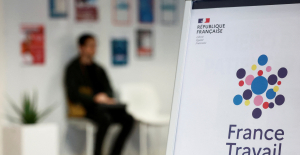 Unemployment insurance: tightening of the rules on July 1
Unemployment insurance: tightening of the rules on July 1 Cancers, chronic diseases... Billions of workers hit by climate change, warns the UN
Cancers, chronic diseases... Billions of workers hit by climate change, warns the UN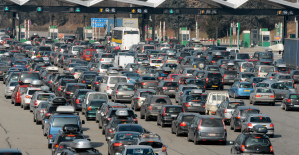 Closure of the A13 extended until at least mid-week
Closure of the A13 extended until at least mid-week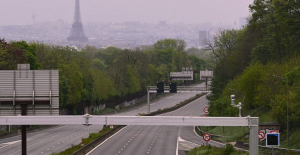 Closure of the A13: Pécresse “asks the State to take charge of making the A14 free”
Closure of the A13: Pécresse “asks the State to take charge of making the A14 free” The series adaptation of One Hundred Years of Solitude promises to be faithful to the novel by Gabriel Garcia Marquez
The series adaptation of One Hundred Years of Solitude promises to be faithful to the novel by Gabriel Garcia Marquez Racism in France: comedian Ahmed Sylla apologizes for “having minimized this problem”
Racism in France: comedian Ahmed Sylla apologizes for “having minimized this problem”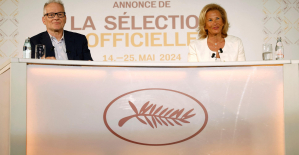 Mohammad Rasoulof and Michel Hazanavicius in competition at the Cannes Film Festival
Mohammad Rasoulof and Michel Hazanavicius in competition at the Cannes Film Festival UK lends Ghana treasures stolen during colonization
UK lends Ghana treasures stolen during colonization Skoda Kodiaq 2024: a 'beast' plug-in hybrid SUV
Skoda Kodiaq 2024: a 'beast' plug-in hybrid SUV Tesla launches a new Model Y with 600 km of autonomy at a "more accessible price"
Tesla launches a new Model Y with 600 km of autonomy at a "more accessible price" The 10 best-selling cars in March 2024 in Spain: sales fall due to Easter
The 10 best-selling cars in March 2024 in Spain: sales fall due to Easter A private jet company buys more than 100 flying cars
A private jet company buys more than 100 flying cars This is how housing prices have changed in Spain in the last decade
This is how housing prices have changed in Spain in the last decade The home mortgage firm drops 10% in January and interest soars to 3.46%
The home mortgage firm drops 10% in January and interest soars to 3.46% The jewel of the Rocío de Nagüeles urbanization: a dream villa in Marbella
The jewel of the Rocío de Nagüeles urbanization: a dream villa in Marbella Rental prices grow by 7.3% in February: where does it go up and where does it go down?
Rental prices grow by 7.3% in February: where does it go up and where does it go down? Europeans: “All those who claim that we don’t need Europe are liars”, criticizes Bayrou
Europeans: “All those who claim that we don’t need Europe are liars”, criticizes Bayrou With the promise of a “real burst of authority”, Gabriel Attal provokes the ire of the opposition
With the promise of a “real burst of authority”, Gabriel Attal provokes the ire of the opposition Europeans: the schedule of debates to follow between now and June 9
Europeans: the schedule of debates to follow between now and June 9 Europeans: “In France, there is a left and there is a right,” assures Bellamy
Europeans: “In France, there is a left and there is a right,” assures Bellamy These French cities that will boycott the World Cup in Qatar
These French cities that will boycott the World Cup in Qatar Basketball (F): big winner of Asvel, Basket Landes will face Tarbes in the semi-final of the League
Basketball (F): big winner of Asvel, Basket Landes will face Tarbes in the semi-final of the League Football: Yazici (Lille) “in shock” after an attempted theft at his home
Football: Yazici (Lille) “in shock” after an attempted theft at his home Serie A: victorious over AC Milan, Inter crowned Italian champions for the 20th time
Serie A: victorious over AC Milan, Inter crowned Italian champions for the 20th time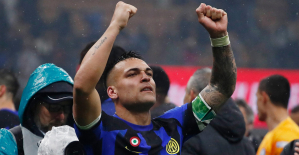 Serie A: “Winning a title in a derby has never happened,” relishes Martinez after Inter’s coronation
Serie A: “Winning a title in a derby has never happened,” relishes Martinez after Inter’s coronation






